Every now and then, EFE (the train authority/company/people in Chile) run these tourist trains along old tracks that used to, but no longer carry passenger trains. EFE drags old cars from somewhere, plump up the seats, put velcro on the curtains (really, my 1920s German car had velcro on the curtains), and wring money out of sillies like me who want to ride the train of memories. It’s called the tren de los recuerdos, and this particular one went from Estación Central in Santiago to San Antonio, a port town on the coast.
I call it the train of other people’s memories because, unlike the family that was beside and behind (and then in front of, as the train changed direction on the way home) me, I have never taken the train to the coast before. I have never sat on those seats with a basket full of sandwiches and the never-lacking hardboiled eggs.
We sat on the train and it lumbered slowly out of the station, picking up speed, my hair blowing from the wind that came in through the open window, until the EFE attendant came by and “suggested” we close our windows, saying as a closer (to end all closers), “they throw rocks here.” Slam. Window shut.
And then we got past the rock-throwing zone, which nobody even thought twice about, or at least didn’t seem to, and we were given ave pimentón sandwiches, which are (I guess) like chicken salad with red pepper, on white bread, in those triangular plastic containers.
We also were given a box of peach “juice.” These I refused, preferring to look out my (now open) window.
Though I did later take the chocolate bar which was, of course, a “trencito.” (means little train).
When we got to San Antonio, I remembered something important. Most of San Antonio is very steep, parts of it are poor, and parts of it smell like it could use a good hose-down. The market and surrounding area was a bit smelly, but the esplanade and view over the water were lovely.
And I walked in the sun, looking for something to be nostalgic about, but did not find much. Though I did find these fish heads, which are good to feed to the sea lions. The sign above said, “comida para lobos 500” (food for (sea) lions, 500 CLP, about a dollar). I could not imagine a scenario in which I handled fish heads for animals that are supposed to be, in a word, gruff, so I wandered away from those.
I walked off of the esplanade, through a little plaza and across the street, up the hill, and there, instead of the view of the ocean I deserved, there was the giant mall, which is good for going to the bathroom and the supermarket, but should never have been built where it was, blocking the view of the ocean which is basically the main thing San Antonio has going for it.
It was a terrible move. And I’m not the only one who thinks so. The text below says, I want to see the sea, not the mall.
Since I was supposed to be feeling nostalgic, I put on my most wide-eyed and deep-breathed attitude, and thought about the many times I’ve been to the Pacific coast, and how for me, it has kind of eclipsed my childhood Atlantic coast in what I think of when I think about the ocean. I lived in California for a little while, and Oregon for a little longer, but I think it’s Chile that did this to me.
And then I wandered some more and had a very oversized empanada, which I chose because the band that played nostalgic music on the nostalgia train (which everyone sang along to, because being Chilean is like summer camp sometimes) was eating there, too, stacking their coins that they’d busked (does busker come from the word buscar, as in to look for?, must investigate) earlier on the train.
Here’s where they were making their money, notice clapping of happy audience members/train passengers.
Gratuitous in-the-train shot.
Kids excited about nostalgia that is not theirs, either.
And then I remembered something nostalgic after all, which is that when my good friend C and I were at his family’s beach house in a little settlement not far from El Tabo, we came to San Antonio one day to watch them pull fish and other creatures (lots of jibia, or giant cuttlefish) from the sea, drink some coffee, and get a good view from up above. And we went to one of the two cactus sellers there on the promenade, and I bought a cactus, which I’m happy to report is alive and well, and actually blooms every year in the winter, which surprised the hell out of me the first time I saw it, and made me say, “you can do that?” which reminds me of the time when, in my old apartment, I found a surprise cat in my living room, and I spoke to it saying “Y tú, que haces acá?” (what are you doing here). Like the cat, the cactus said nothing. Unlike the cat, the cactus sat still. The cat fled, as you might imagine. Out the window and back to the neighbor’s apartment from which it had come.
But I digress. Having once purchased one cactus in San Antonio, and since I was trying to have some memories of my own, I bought another one. Except it’s a succulent. It looks happy enough on my kitchen windowsill, and like the other one, it sheds little pebbles every time I water it.
The mean age of the people on the train was somewhere in their 60s, and by the time it was time to get back on the train, everyone was milling around and sitting on benches, waiting for it to be time.
It was a long day to essentially have nothing to do, other than walk hither and yon, and take a boat trip in the harbor (which I did not do). The fine people of San Antonio peeked all around the train, asked us where we were going, to which we responded “Santiago,” and many of them seemed surprised, as they hadn’t heard of the program. I wished they’d left the train parked during the day so all the train lovers could have taken a peek. A couple of kids got lifted up so they could see in, but I thought EFE could have done more to make it more fun for the people of San Antonio.
As we got back on the train, everyone windblown and sun-exposed, and it started to slowly chug its way back to Santiago, people stood and waved at the train. Buen Viaje! they wished us, waving with one, or both hands, holding kids, who waved and wished us well, too. I spied a solid fifty people, walking along the promenade, or standing beside the tracks who waved to us, saying goodbye as though we were friends that they wouldn’t see again for a while.
As we rolled back in the direction from whence we’d come (at less than half the speed of a bus), we periodically saw groups of photographers poised and waiting for us to pass by and click. And then we got to this one point, an all-but abandoned platform where a woman had brought a gift to pass into the window of one of the cars, to one of the kids on the train. The woman couldn’t make it this far and fast, so the track worker grabbed the gift and ran up to the train to hand it through the window. Really.
And then I got it. A little tingly chill somewhere around my left shoulderblade, a feeling of belonging to this crazy summer camp of singing sextegenarians, chicken sandwiches, boxes of juice, people throwing rocks and sometimes handing presents. I had a succulent in the outer pocket of my backpack, the Pacific ocean in the rearview mirror of my mind. And I felt a little twinge of someone else’s nostalgia. Or maybe it was my own.


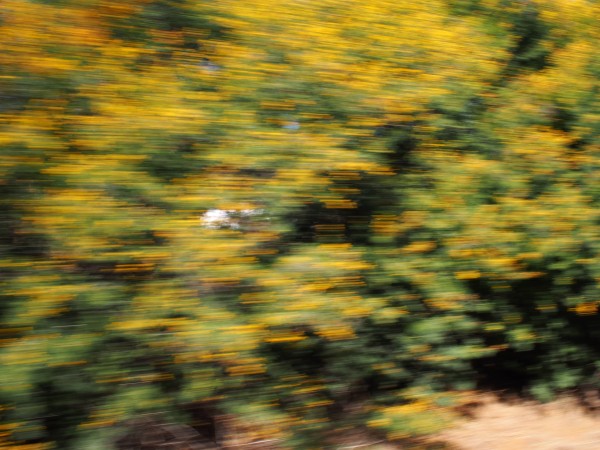
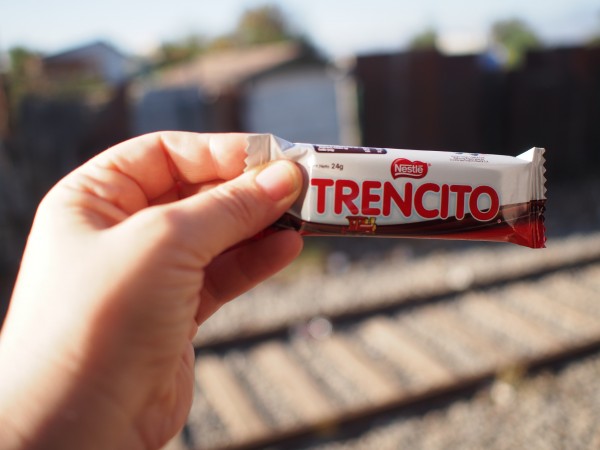
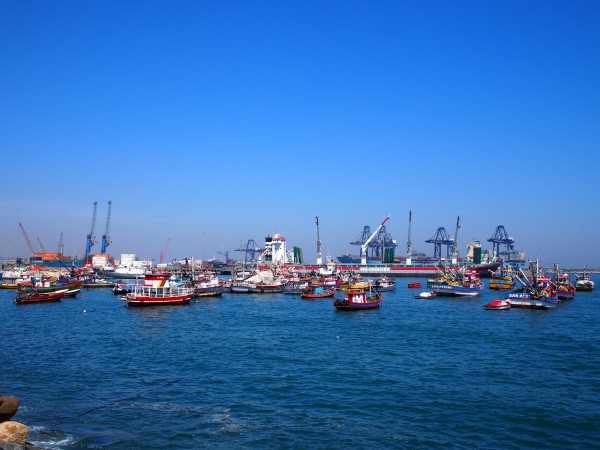


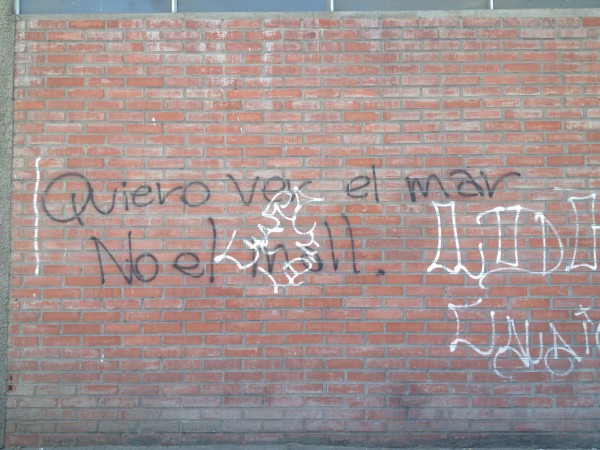
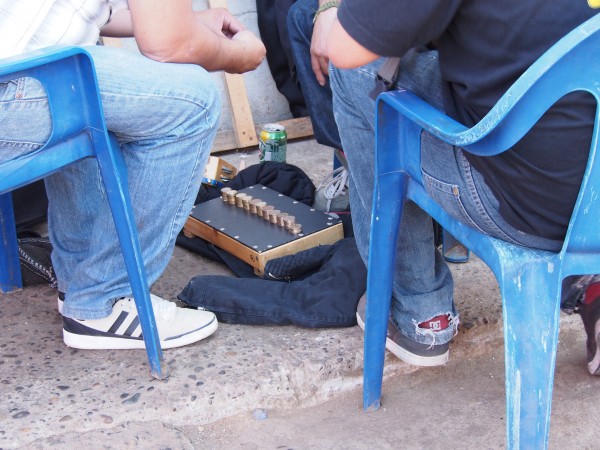

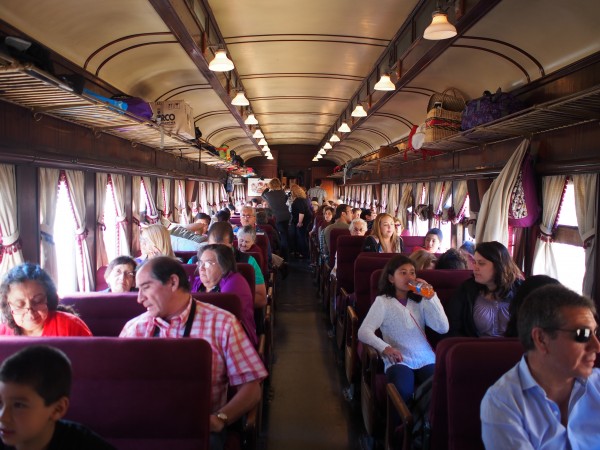
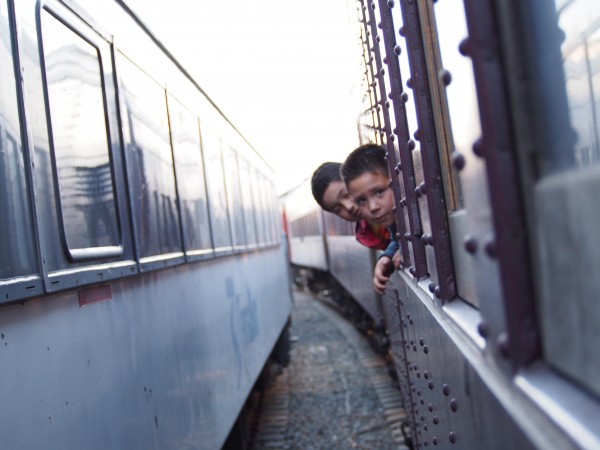
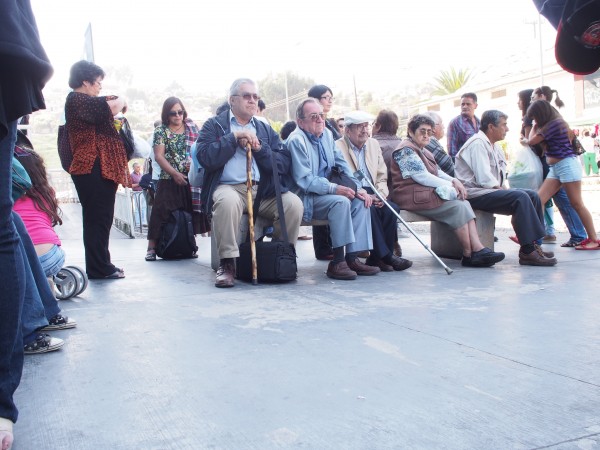
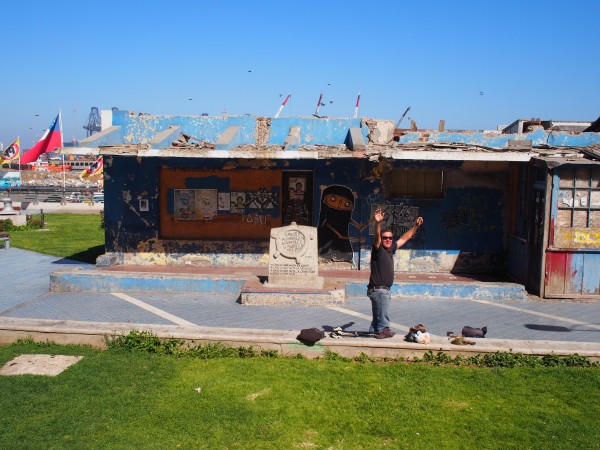
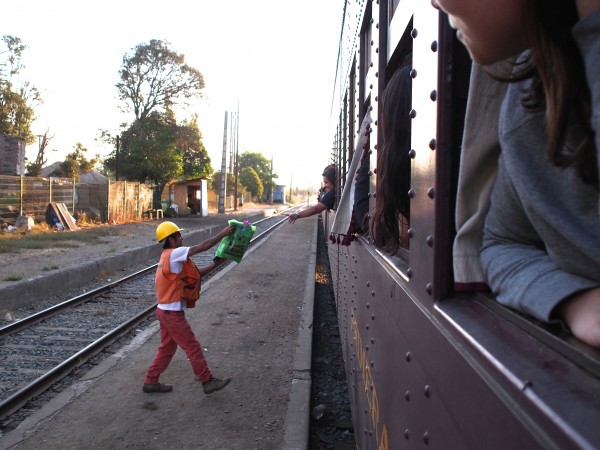
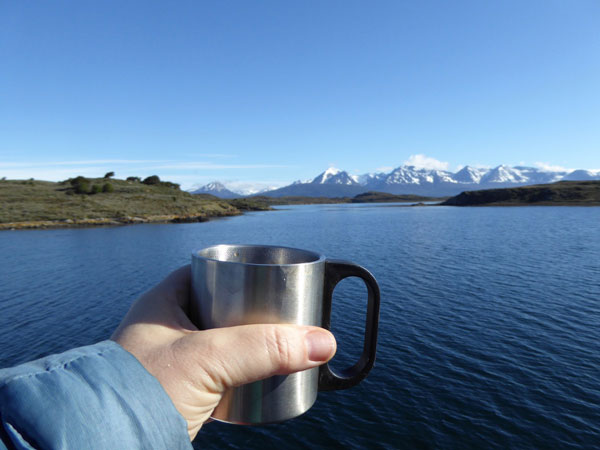
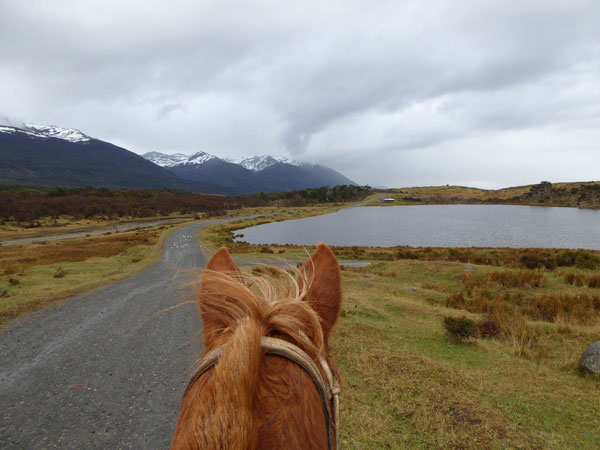


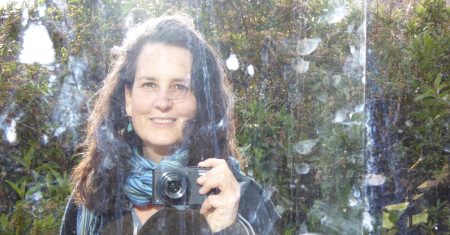
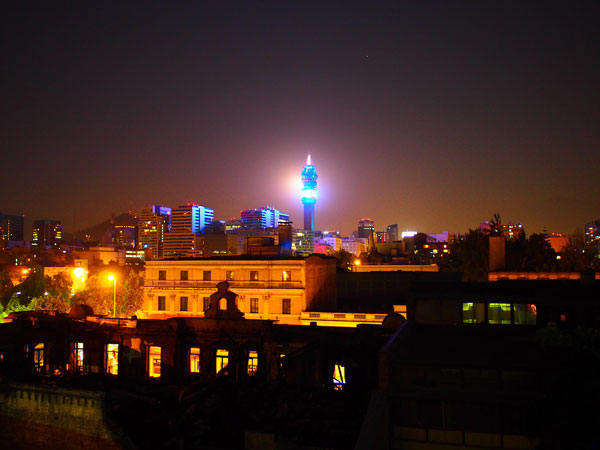
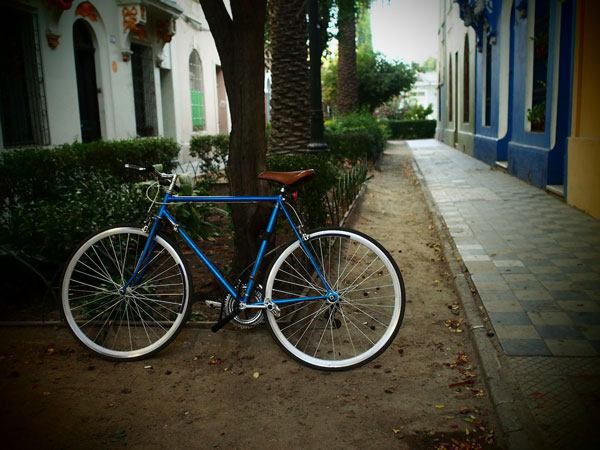


I should not have read this I feel. Not because it wasn’t any good, quite the opposite. I’m sitting in my bed in Stockholm, Sweden, longing to go back to chile. Trying to still my thirst for all things chilean, I read this. And now my heart is aching more than ever, haha.
Josefin, I hope you get to at least visit. Why the Chile love? Is it where you’re from? I have nostalgia for loads of places. I guess it’s one of the ways I know I’m alive. Thanks for letting me know I struck a chord, even if it’s a heart-aching one.
My husband is from chile. We have a house in el Quisco and we’re going back i september (luckily)
I think it’s the fact that I live in an apartment in sweden and my days look pretty much the same. In chile we’re always up and about.
I agree with you about nostalgia, I think it’s a great feeling. Especially when it turns up out or the blue, only because one scent a certain smell or saw a certain building etc.
How lovely! September is an excellent time to visit (as I’m sure you know). Did you see where I was just in El Quisco norte a few months ago (blogged about it)? I swear I am not following you. And yes, vacation is always endlessly more interesting than “real life.” There are many Chileans in Sweden (Americans, too), but I’ve never been. I’m sure I could find something to be nostalgic about!
Again, thanks for dropping by!
El Quisco have some great places. But I think it’s better in december when the beaches isn’t that crowded. Crowded can be nice, but at the beach it’s nice to stretch out without accidentily put your feet on the neighbours tummy. Oh, and I must recommend punta de tralca, my favorite beach no far from Quisco. It’s beautiful in late spring.
Come to sweden in july and I promise you will find something to love. Though you wont learn much swedish I’m afraid. We swedes love to speak in english whenever we get a chance.
I’m staying about seven months this time, which means a lot of exploring (and loads of family dinners). Sorry for blabbing.
Thank you for an intresting blog, you write very beautiful.
I know that Sweden in the summertime must be incredible. I figure I know the word fika, what else do I need to know? Let me know if you’ll be in Santiago during your time here. And yes, we mostly didn’t spend time at the beach, more walking along the coast and around the point with the stand of trees on the way to El Canelo, which was insanely crowded!
Not much else, fika pretty much cover it all. But since you’re used to chile I should tell you that being late is a deadly sin in sweden. We’re very fond of talking about what time it is and what the weather is like.
Another plus with walking along the coast is that there is a higher chance of seeing something interesting. Like lizards or other creatures.
My mother in law lives in Santiago, so I will give you a heads up.
Hi Eileen! do you remeber me? most probably not! I´m the Italian linguistic living in Germany and in love with Chile; the one that reads all your posts but (almost) never drops comments.
I found your post really nice, maybe that´s due to the fact that i´m a very nostalgic person. Actually, I´m addected to nostaglia.
I also loved your guessing of the word buskers…let us know if you can find out anything about it!
Hi Irene, I do remember you! I have space for all linguists in my brains. Sadly, buskers has nothing to do with people looking for anything. It seems to have to do with pirates and an itinerant lifestyle. Sad for me, but I’m glad that the buskers are not in search of anything. All that looking would get exhausting.
Thanks for popping in! I’m writing quite a bit about memories these days, so you’ll probably enjoy yourself quite a bit. Always nice to hear from you!
Enjoyed this. This train route comes out near me and you might perhaps have passed through the area of Padre Hurtado and Talagante (it might not have been a memorable part to be honest) which is near to where I live. (Or maybe there’s a different route.) Often have to drive over the train lines and there are no barriers and the cars we just crawl over carefully. Very rarely is there a train though and passenger trains are particularly rare although I did see one yesterday all lit up around dusk by Camino a Melipilla. It may have been one of these expreso del recuerdo as I see the website has mention of one yesterday.
If my Dad gets to visit for sure he, as a train buff, would like to do this. None of them are steam though, I don’t think? Website shows a steam engine under repair, but not in actual action in any of the photos.
Trencito is my daughter’s favourite, to the extent that she rather turns her nose up at a lot of other chocolate.
Climbed a hill around here a couple of weeks ago and some parts of it had quite a lot of cactii.
thanks for your comment. I think we were in PAC when the rock-throwing comment came. I wondered if we went through Talagante, but from what I recall from riding my bike out there, the road goes south, and then turns west. I never discerned a strong turn west, so I’m actually not sure what route we took. We could probably figure it out by looking on google earth, following the tracks back from San Antonio.
It was a bummer that they were not steam-run, and also they should have had the people working in old-time uniforms! (according to me). You know about the ramal out to constitución from talca, right? that’s an awesome ride. I wrote about it on the LAN website. I have a love for trains, but probably not as much of a train lover as your father! It seems to be an older man thing. 🙂 And if your daughter loves trencito, I guess she just has a sweet tooth! Super sweet! but has some taste, unlike chubi, which I think tastes nothing like chocolate.
Good to hear from you!